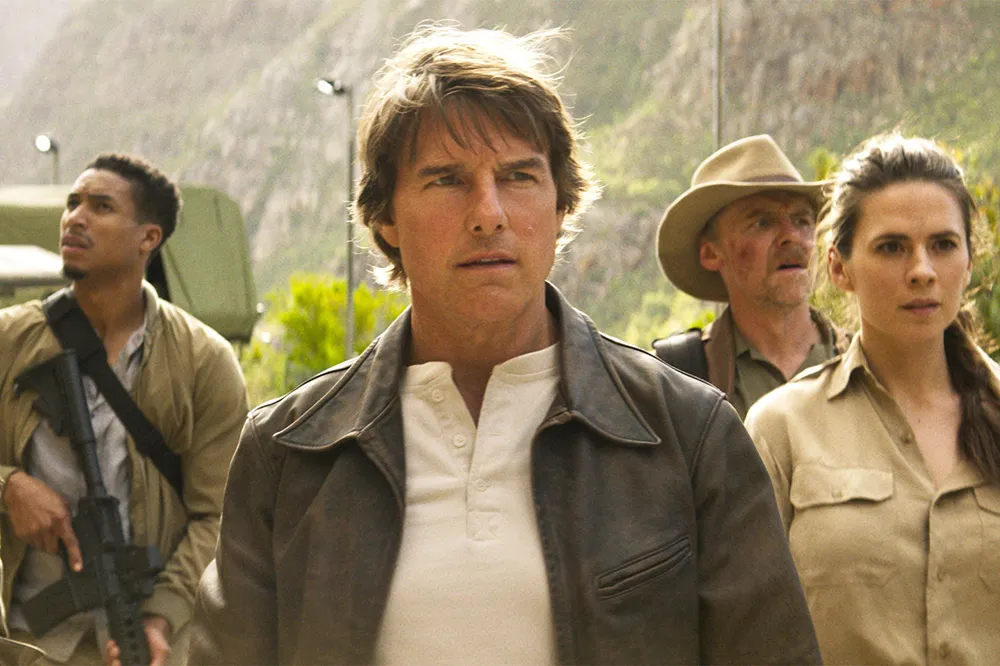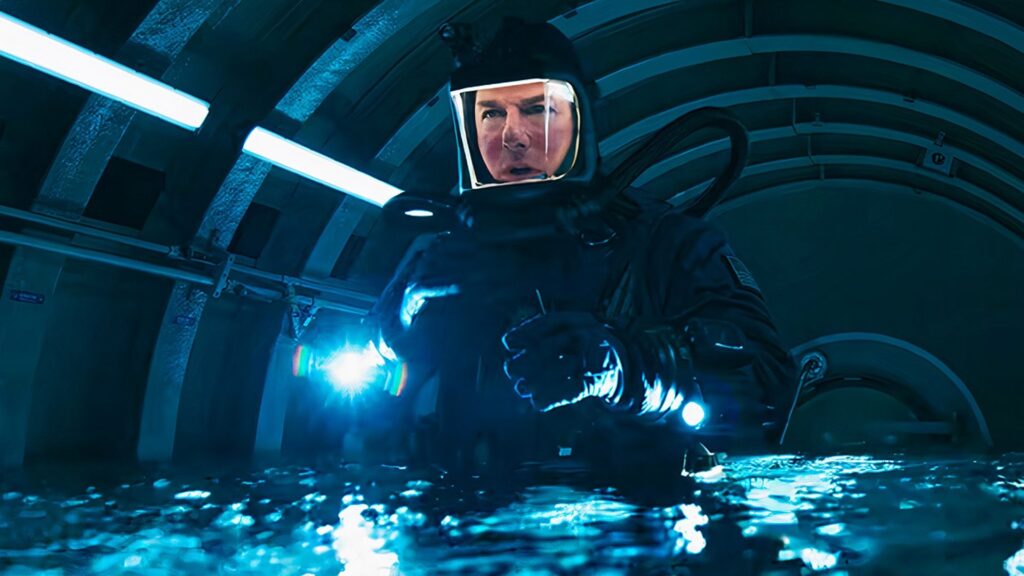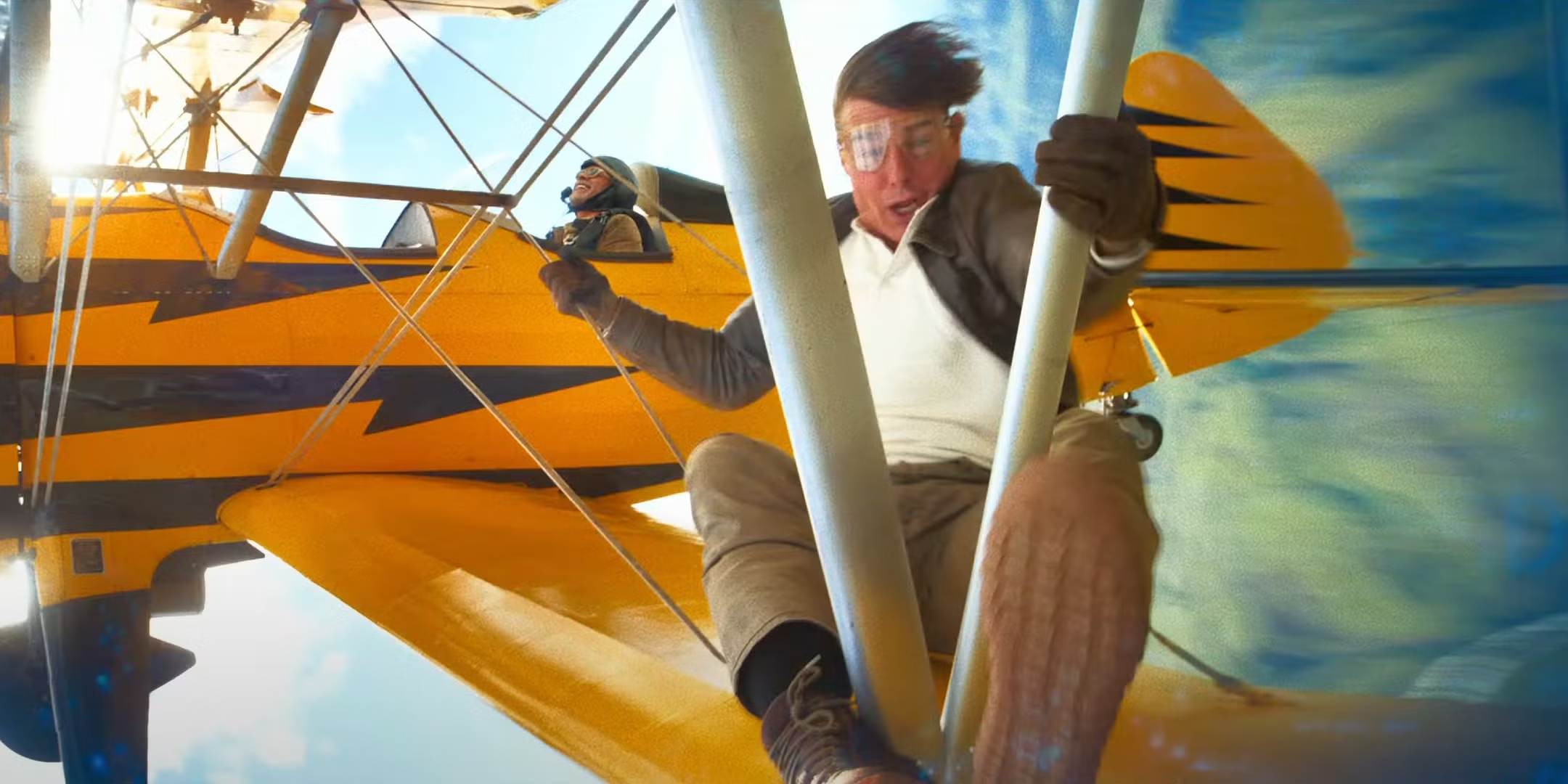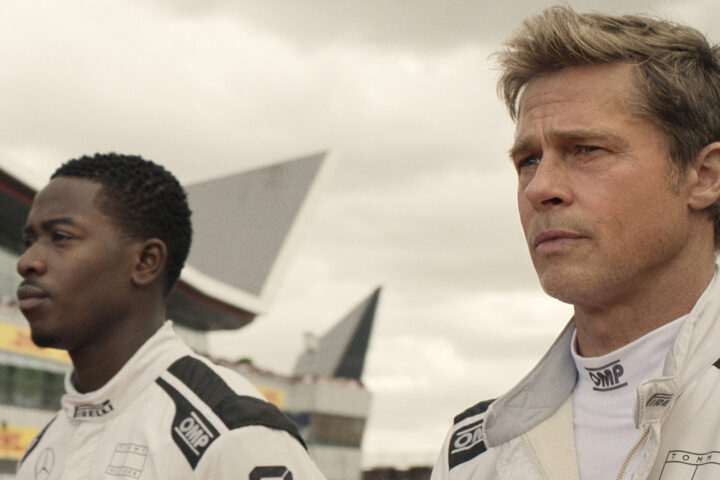Tom Cruise and writer-director Christopher McQuarrie return for what feels like a culminating chapter in Mission: Impossible—The Final Reckoning, the $400 million follow-up to 2023’s Mission: Impossible—Dead Reckoning Part 1. But while the 2023 installment ranked as one of the series’ most fast-paced and entertaining rides, that mission has been aborted this time in favor of a verbose picture that takes considerable time to thrill. It ultimately does, but you have to stick with it.
A measured set-up and reliance on call backs to previous entries make The Final Reckoning front-loaded with exposition; its first true action sequence doesn’t come until the 90-minute mark of this behemoth, 169-minute movie. But once it arrives as a spellbinding, twenty-minute undersea excavation, the movie kicks into gear.
Sixty-two-year-old Cruise remains a welcome presence as daring IMF agent Ethan Hunt, still going full espionage throttle whether infiltrating a sunken submarine packed with nukes or white-knuckling a vintage biplane through the clouds. No other film franchise is as symbiotic with its star; even when the plot veers into mumbo jumbo, Cruise keeps the engine running.
Picking up two months after the last installment, the film spends its first half spinning a convoluted premise: an all-powerful rogue AI called “the Entity” has hijacked the digital world, threatening to launch global nuclear warheads and reset civilization post-apocalypse in four days. Trouble is, it can’t be located or stopped like a human enemy, and it’s smarter than everyone (except perhaps Ethan).
Simply put (and the movie makes it far more complicated), the only way to stop it is to retrieve the original source code, sealed inside a sunken Russian sub at the bottom of the Bering Sea, and inject it with malware. The coveted key to this watery vault—the film’s central and elusive MacGuffin—was introduced last time. The mission: obtain the key, reach the sub and fake out the Entity at its own game. Since the AI controls everything digital, Ethan’s crew must rely on analog spycraft—off the grid and under the radar, away from the parasite’s reach.

Human nemesis Gabriel (Esai Morales), a longtime adversary of Ethan’s and the Entity’s former human enabler, also seeks the source code to claim—what else?—godlike power. As usual, we get high-tech gadgets, including a “poison pill” kill-switch and the “Podkova” it pairs with; these are always introduced via jargon-filled dialogue that re-explains the previous exposition: “So what you’re saying is…” Still with me? Good on you. This is all, frankly, a lot.
Forget the series staples: largely gone are zippy, globetrotting exotic locales (though we do get obligatory stopovers in the London, Italy, U.A.E., Congo and Norway), wild action set-pieces (there’s one) and hidden identities and double crosses. Breakneck pace? Don’t count on it. This one takes its time, and asks us to do the same.
Angela Bassett returns with an upgrade: from CIA director in 2018’s Mission: Impossible—Fallout to President, now facing a Sophie’s Choice dilemma—launch U.S. nukes before the Entity can, or risk global annihilation. Bassett brings gravitas to extended war room scenes, alongside a solid Nick Offerman and Janet McTeer. Hannah Waddingham is underused as an aircraft carrier admiral, but Succession’s Trammel Tillman steals scenes (from Cruise!) as a sub commander aiding Ethan’s mission. A nice surprise: the return of William Donloe (Rolf Saxon), the flustered CIA analyst from De Palma’s 1996 original, who resurfaces with crucial intel.
Also back: Henry Czerny’s Kittredge, now CIA director, and Shea Whigham’s agent Jasper Briggs, this time with an unnecessary backstory. Meanwhile, the core team races the clock: underused Hayley Atwell’s nimble Grace, Simon Pegg’s ever-reliable Benji, Ving Rhames’s suddenly sentimental Luther and Pom Klementieff’s ferocious assassin Paris. But there’s no denying the loss of Rebecca Ferguson’s formidable agent Ilsa and the curious absence of Vanessa Kirby’s White Widow. The team feels thinner, popping in when needed, then offscreen for extended periods.

For those looking for excitement (and who isn’t?), Mission: Impossible—The Final Reckoning takes off twice, first during an epically scaled, deep sea kamikaze dive to that morgue of a sunken Russian sub where a solo Ethan battles supersized, free-falling warheads and a vessel careening down a steep cliff. This is a James Cameron-worthy sequence, with its massive set, chilly blue-gray palette and haunting chamber of horrors, astonishingly constructed and performed by Cruise with clear and grueling physicality. It’s a franchise highlight.
The second comes in the film’s last half-hour as Ethan and Gabriel dogfight a few thousand feet above ground in dueling biplanes (their red-yellow colors against the Congo’s lush background are a real visual kick). This is old-school action with real punch, giving Cruise a chance to show off his famed fearlessness and Morales a few moments of mustache-twirling flamboyance, lightening the film’s overall grim tone. But these flights of spectacle remind us just how much the rest of the film holds back.
As Cruise clings to a wing mid-corkscrew in a death-defying feat of aerial acrobatics, the line between character and actor blurs. It becomes less about Ethan’s survival than Cruise’s obsession with topping himself. In 2023’s outing, Cruise famously drove a motorcycle off a 100-foot Italian Dolomite cliff. Here, as he hangs onto a plane’s wing for dear life during a life-threatening (for character and actor) display of aerial acrobatics, the picture becomes less about Ethan’s survival and more about Cruise’s derring-do, briefly turning an action movie set-piece into a documentary (“how’d he do that?!) about a star who’ll do anything to entertain. And that, as its showman knows, is largely why we’re there.
Morales, a fine actor, does well and Gabriel has the makings of a great villain, but the film undercuts him by keeping the Entity abstract but omnipresent. Gabriel isn’t exactly its human form, nor its brain, and so he never feels fully, dangerously actualized. The result: unclear stakes, muddled human threat.
The Mission Impossible series has always excelled when action drives the narrative. This time, story overtakes spectacle, and McQuarrie’s purported tendency to write intrigue around big set-pieces leads to a film that sometimes begs for more of them. Audiences will decide whether they accept this narrative detour from the previous installment’s amplified thrills, but Mission: Impossible—The Final Reckoning, after nearly three hours, pays off as solid, large scale entertainment. The film ends on a philosophical note—with a heartfelt self-destruct message and a hint at a reconfigured future team facing a massive new threat, if Cruise and his audience accept the mission.
Recommended.
3 stars



